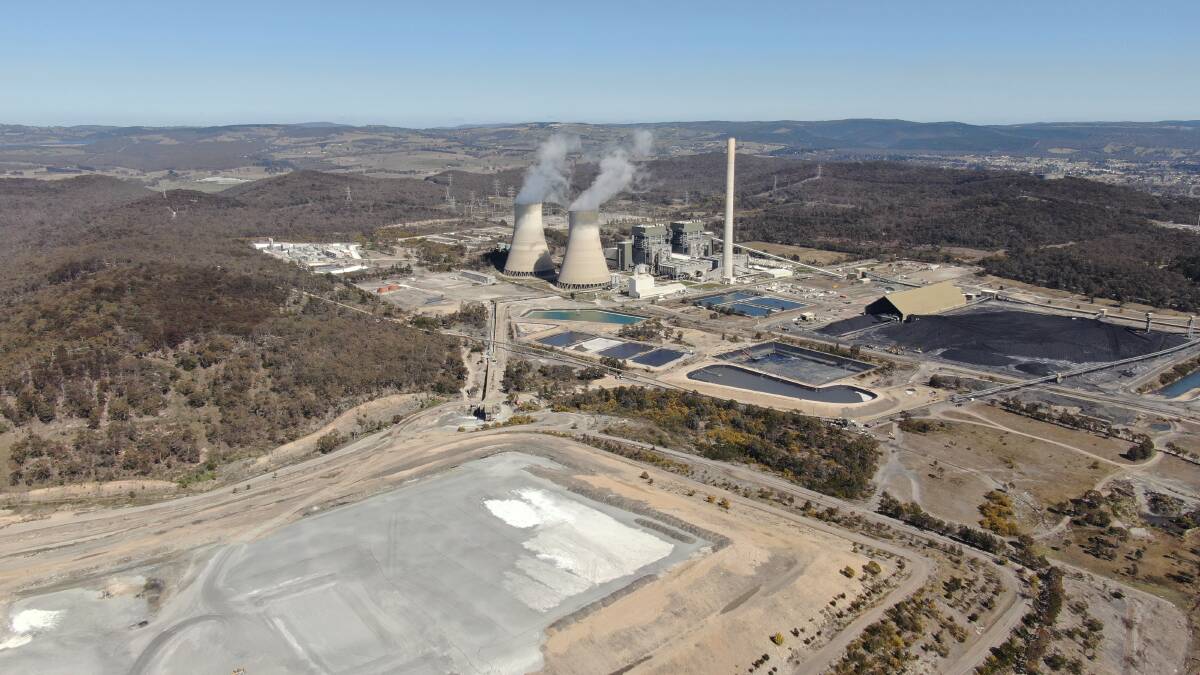
An EnergyAustralia spokesperson says the company is committed to ensuring environmental impacts from their operations are reasonable following a report that revealed the Mt Piper ash dump is contaminating groundwater in the Lithgow area.
Subscribe now for unlimited access.
or signup to continue reading
"At EnergyAustralia, we take great care to ensure that any impacts from our operations are socially and environmentally acceptable," the spokesperson said.
"Mt Piper oversees two ash repositories that are covered under a single Environment Protection Authority (EPA) licence.
"To manage underground water at Mt Piper, we are investing more than $4 million in a program aimed at protecting nearby water courses, streams and local ecology."
Out of the Ashes II, produced by the Hunter Community Environment Centre, also estimated 100 tonnes of heavy metals leach into NSW waterways every year from the combined 216 million tonnes of accumulated coal ash waste in Lake Macquarie (101 million tonnes) the Central Hunter Valley (84 million tonnes), Central Tablelands (28 million tonnes) and Wollongong (3 million tonnes).
Coal ash, a byproduct of burning coal at power plants, represents 18 per cent of all waste produced in Australia. In NSW there is 200 million tonnes of ash is stored in unlined waste dams.
This year, EnergyAustralia admitted to the NSW EPA that the Mt Piper ash dump is contaminating groundwater, according to the report.
The spokesperson confirmed that the company has installed groundwater bores around the plant's boundary, which are sampled and tested to Australian standards as required by the EPA on a routine basis.
"Using this data, we have commenced a project to intercept, redirect and recycle water that may be impacted by our ash repositories," they said.
"This "groundwater interception" investment is in addition to $11.5 million already spent each year at Mt Piper on managing water and ash at the site.
"EnergyAustralia continues to be open and transparent with regulators and the community by providing access to monitoring data for how ash repositories are managed at Mt Piper."
Members of the community who would like to know more are encouraged to make contact at: community@energyaustralia.com.au
Existing coal ash management and reuse practices are failing to prevent the contamination of ecosystems in Lithgow and surround, a new report has found, painting a grim picture.
Ash waste is growing by 3.8 million tonnes a year in NSW, the equivalent of seven tonnes of ash waste dumped per minute.
28 million tonnes of coal-ash is stored in Lithgow, at the top of Sydney's drinking water catchment and 15 million tonnes is stored at Mt Piper and 13 million tonnes at the decommissioned Wallerawang dump contribute 16 tonnes of harmful metals per year to the Upper Cox's River.
The report also warns that between now and its planned retirement in 2049, 206 tonnes of harmful heavy metals will leach from Mt Piper if nothing is done to increase reuse rates.
Results of the Hunter Community Environment Centre (HCEC)'s water surface sampling of drainage from both Mt Piper and Wallerawang ash sites and the Springvale mine discharge point found significant water quality guideline exceedances of species protection limits for boron, manganese, nickel, cadmium, copper, zinc; recreational guideline limits for aluminum, boron, cadmium, cobalt, iron, manganese and nickel.
In the news:
The state government is liable for the bulk of the pollution stemming from coal ash waste.
"Contamination studies from 2014 commissioned by NSW Treasury to quantify pollution levels at coal-ash dumps before the privatisation of the NSW coal-fleet show extensive groundwater, surface water and sediment contamination with heavy metals at all NSW coal-ash waste sites," a report summary says.
"Our analysis suggested that these studies underestimate the contamination levels due to poorly selected and limited background wells."
The report's authors also analysed water quality data, which showed numerous exceedances of Australian water quality guidelines relating to heavy metals.
"Industry studies into coal ash confirm that NSW ash poses environmental risks for selenium, molybdenum, boron, vanadium, nickel, zinc and copper," the report said.


